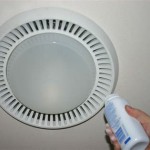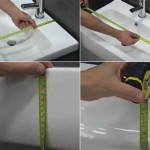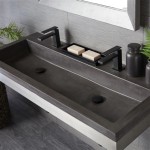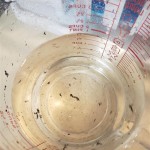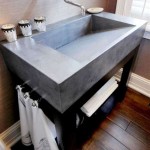How to Fix Smelly Bathroom Pipes
A foul odor emanating from your bathroom pipes can be a source of significant discomfort and embarrassment. While the issue may seem daunting, it is often resolvable with some simple troubleshooting and maintenance. This article will guide you through identifying the root cause of the smell and implementing effective solutions to eliminate it.
Identifying the Source of the Odor
Before embarking on any repairs, it is crucial to pinpoint the origin of the unpleasant smell. Carefully inspect your bathroom plumbing and consider these potential culprits:
- Dry P-Traps: P-traps are U-shaped sections of drain pipes that hold a small amount of water, acting as a barrier against sewer gases. If the water evaporates, the seal is broken, allowing foul odors to escape.
- Sewer Gas Leaks: Cracks or leaks in the sewer line can permit the release of sewer gases into your bathroom. This is particularly common if the pipe is old or damaged.
- Clogged Drains: Hair, soap scum, and other debris can accumulate in your bathroom drains, creating a breeding ground for bacteria and unpleasant odors.
- Vent Stack Issues: The vent stack, a vertical pipe that connects to your sewer line, allows air to flow in and out, preventing pressure buildup. A clogged or damaged vent stack can hinder this process, leading to odor problems.
- Improper Venting: If your bathroom lacks adequate venting, sewer gases may be pushed back into the pipes, resulting in a foul smell.
Once you have identified the likely source, you can proceed with the appropriate repair or maintenance procedures.
Solutions for Smelly Bathroom Pipes
Depending on the cause of the odor, different solutions may be necessary. Here are some common approaches:
1. Replenishing P-Traps
The simplest solution for dry P-traps is to add water to them. Pour a cup or two of water into each drain to refill the P-trap and restore the seal. You can also prevent future drying by occasionally running water in the drains, especially if they are infrequently used.
2. Addressing Sewer Gas Leaks
If you suspect a sewer gas leak, it is best to consult with a professional plumber. Sewer gas leaks can be hazardous to your health, and they require specialized tools and knowledge to repair. A plumber will inspect the sewer line, identify any leaks, and perform the necessary repairs, potentially involving pipe replacement or sealing.
3. Cleaning Clogged Drains
Cleaning clogged drains is an effective way to eliminate odors caused by bacteria and debris buildup. You can use a plunger, drain snake, or commercial drain cleaner to clear blockages.
For stubborn clogs, a plunger can be used in combination with a drain snake. Place the plunger over the drain opening and use a forceful up-and-down motion to try to dislodge the blockage. If unsuccessful, a drain snake can be inserted into the drain and twisted to break up and remove the clog.
Commercial drain cleaners are readily available at hardware stores and can be effective in dissolving clogs. However, exercise caution when using these chemicals, as they can be harsh on pipes and potentially harmful if not used properly. Always follow the instructions on the product label and wear protective gloves.
4. Maintaining Vent Stacks
To prevent vent stack issues, it is important to ensure that the vent stack is free from obstructions. Regularly inspect the vent stack for any signs of blockage, such as bird nests, debris, or ice buildup. Remove any obstructions you find to maintain proper airflow.
If your vent stack is damaged or corroded, it may need to be repaired or replaced. This is best handled by a qualified plumber, as it may involve working at heights and handling potentially hazardous materials.
5. Improving Ventilation
If your bathroom lacks adequate ventilation, you can improve airflow by installing a vent fan or ensuring that existing vents are functioning properly. A vent fan should be turned on whenever you shower or bathe to remove moisture and prevent odor buildup.
Regularly clean vent fans to remove dust and debris that can hinder their efficiency. You can also use a vent fan cover to prevent insects and other creatures from entering the vent.
Conclusion
By understanding the potential causes of smelly bathroom pipes and implementing appropriate solutions, you can eliminate unpleasant odors and create a more comfortable and hygienic bathroom environment. Remember to prioritize safety and consult with a qualified plumber for any complex plumbing issues.

How To Clean A Stinky Sink Drain By Home Repair Tutor

How To Clean Stinky Drains Liquid Plumr

How Can I Help A Stinky Bathroom Sink Drain Cleaning More

Prevent Drain Smells Deodorize Your Drains
Why Is There A Sewage Smell In Your Bathroom Howstuffworks

How To Get Rid Of Sewage Smell In Your Bathroom Bond Cleaning Adelaide

Sewer Smell In Bathroom Solved Bob Vila

Fix Smelly Bathroom Drains

What Causes Bathroom Drains To Smell

How To Clean A Stinky Sink Drain Home Repair Tutor
Related Posts


